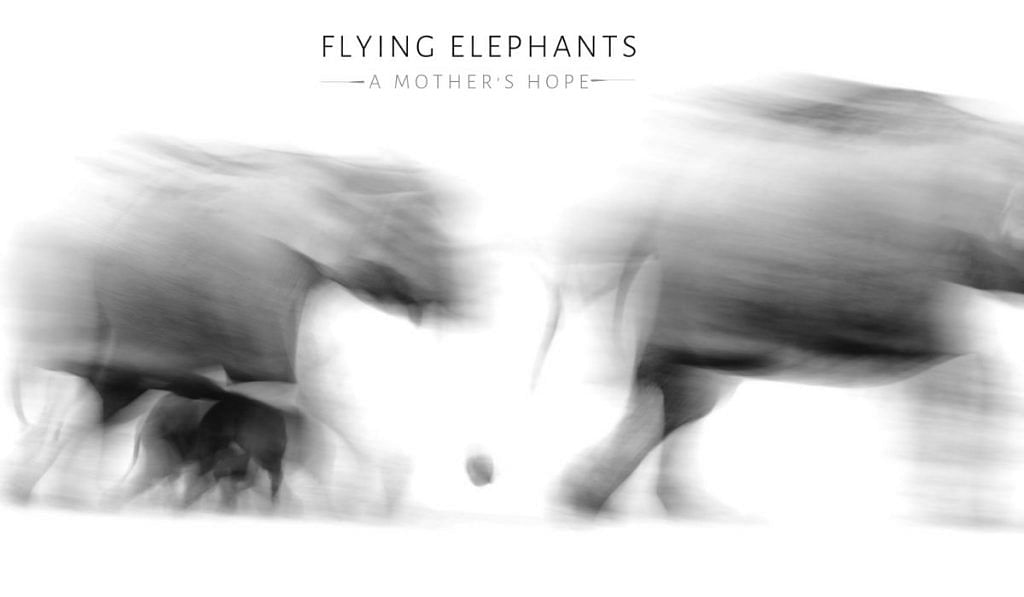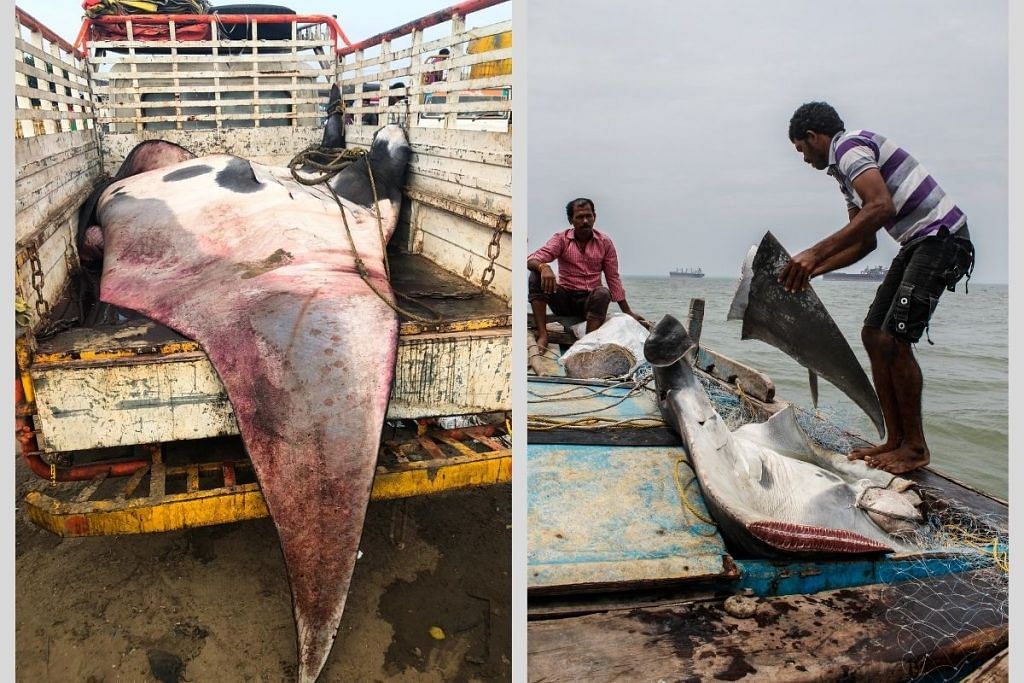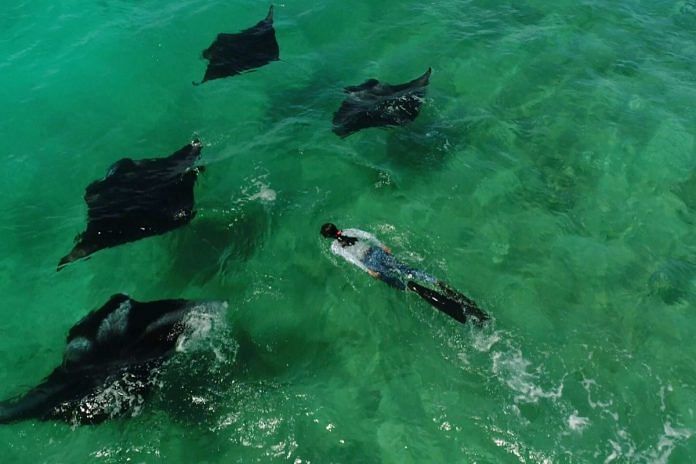What starts off as a film with a scenic aerial view of Karnataka’s lush forests, and its abundance of precious critters, goes on to make a strong statement about how habitat loss and human-animal conflict are major threats to Asia’s elephant population. But Flying Elephants — A Mother’s Hope is not your average documentary about elephant conservation.
The six-minute-long black and white film directed by Prakash Matada takes us through an ancient tale of how our ancestors were once masters of the sky, but were then relegated to a life on Earth. They walked through forests, meadows, lakes and rivers, and learned to love their new lands. But eventually, they were hunted down by the clutches of men and were shackled and chained.
The film has been nominated this year for two of the most prestigious wildlife and nature film awards — the Jackson Wild Media Awards and Wildscreen Awards. The former will be held between 28 September and 1 October, and the Wildscreen Festival will take place from 19 to 23 October.
The awards, filmmaker and longtime Jackson Wild jury member Akanksha Sood Singh explains, are a very big deal in the wildlife film industry — ”Jackson Wild is like the Emmys and Wildscreen is like the Oscars.”
But this is only one of many Indian films and filmmakers getting recognition this year.
Indian storytelling is having a moment
For decades, most well-known documentaries about India were directed and produced by American or British filmmakers. But there has never been a dearth of Indian talent.
Swati Thiyagarajan, filmmaker and environment editor at NDTV who has been nominated for both Jackson Wild and Wildscreen as part of the Netflix film My Octopus Teacher, recalls an old interview in which she asked famous British filmmaker Richard Attenborough why he hasn’t travelled extensively in India, like he had in other parts of the world. Attenborough responded by simply pointing out that India has so much talent of its own that it doesn’t need him or a BBC to come and make films about it.
Thiyagarajan, who has previously served as a judge at the Jackson Wild Media Awards, believes India is brimming with world-class professionals in the natural history filmmaking space.
“Not just in terms of the nominations, but there are also a lot of Indians who are part of the Media Lab and Fellowships at Jackson Wild,” concurs Singh.
Being recognised by these festivals gives filmmakers a chance to network, to get more work and a bigger platform to push their films. For filmmakers working closely on a particular conservation issue, it also helps push for policy change back home when a film gets global attention, points out Nitye Sood, director of nominated film Peng Yu Sai.
Apart from the recognition Indian filmmakers are now receiving, there is also a growing wave of characteristically ‘Indian’ storytelling — a move away from the Eurocentric template set by big broadcasters like the BBC and National Geographic.
This is part of the reason why Indian films are now standing out in the global scene, believes Singh. “Flying Elephants, for instance, is essentially a conservation film about elephants. But the treatment of it is so different from what we’ve seen until now. In today’s market, there’s so much content, you have to ask yourself, ‘How differently can you tell your story so it can be retained?’”
The film, which took over two years to make, is narrated in Betta Kuruba, a tribal language, in the voice of a mother elephant. It was inspired by an ancient legend from Gaja Shastra.
“I was lost in a vortex of elephant stories from Hindu and Buddhist texts, and came across this particular legend in a paper on elephantology in Sanskrit. Gaja Shastra is a collection of stories on elephants,” explains creative producer and writer Aditi Rajagopal, who penned the first draft of the script while stuck in Bengaluru traffic.
“I had spent weeks reading about elephants. How they are being shackled around India, how they are being decimated across Asia and Africa — these thoughts were a contradiction to every image of elephants I had come across in Hindu legends, where the elephants were majestic, otherworldly, rulers of the land,” she tells ThePrint.

Breaking away from conventional documentary tropes, Flying Elephants is more like an art film that slowly builds a sense of curiosity and empathy. “The internet is full of stories of cruelty to elephants, but a film that highlights only that ends up evoking emotions like helplessness. It doesn’t create an emotional response that translates into action,” feels Rajagopal.
The choice to let the narrator be a tribal mother was also something the makers felt would add to the authenticity of the storytelling, as “the way tribes in India live is more sustainable, and more in harmony with forests and wildlife, than those from urban settings”.
Not just tigers
It’s not just narrative devices that the new generation of filmmakers is experimenting with, but also subject matter. “Almost 18 years ago, when I started being on film festivals juries, there were primarily a lot of tiger films coming out of India. But in recent years, there have many more films on different species. Thankfully, tigers are no longer a star in the festival circuit,” says Singh.
Take Peng Yu Sai, an investigative documentary by Malaika Vaz and Nitye Sood, which explores the illegal trade of manta rays from India’s oceans. Most Indians don’t even know manta rays exist in our waters, say the filmmakers, but the Jackson- and Wildscreen-nominated film dives into how India has emerged as one of the largest global exporters of gill plates — the coveted parts of the fish that are sold as medicinal health tonics.
“It all began when Malaika was on a research recce trip in Andhra Pradesh, and came across a dead manta ray in a landing port of a fishing village,” Sood tells ThePrint. None of the local fish markets seemed to be selling the fish, found Malaika, who then realised something larger was at play.
What she unearthed was a staggering amount of wildlife contraband being smuggled out of India’s waters. Vaz and Sood’s quest to map the illegal manta ray trade led from India to the India-Myanmar border, and finally to the trafficking hubs of Hong Kong and Guangzhou, where they went undercover as seafood traders. Here, they realised that most of the markets were fuelled by manta rays from Indian waters.

Manta rays have been on the planet for over 20 million years, and indicate the health of our oceans, but they are fast heading toward extinction. As Thiyagrajan points out, wildlife and environmental policy in India often gets skewed in the direction of well-known reptiles and birds, despite the fact that India is considered one of the 17 most mega diverse countries in the world, with extraordinary ecosystems such as mangroves, swamplands, deserts, mountains, coasts and forests.
Now, as we are in the midst of the world’s sixth mass extinction, films can be an important tool to remind both policymakers and ordinary citizens that all kinds of species are important. “People only react to something they are made aware of, which is why films are needed to help them make that connection and care,” says Thiyagrajan.
Making a change
The dream for any wildlife filmmaker, however, is not just to be recognised by their heroes and peers, but also to be able to effect change. Flying Elephants is supported by the Centre for Wildlife Studies and Saving Nature, which plans to work with the Karnataka government to show the film in government schools and spread awareness.
The makers of Peng Yu Sai, too, plan to put their research to use and get manta and mobula rays listed in Indian laws through the Wildlife Protection Act of 1972. The entirely self-funded film is the first Indian project to earn a nomination for Best Impact Campaign and Best Presenter-led Film.
But what does a successful Indian impact campaign look like? Akanksha Sood Singh believes that veteran Indian filmmaker Mike Pandey’s 2000 film Shores of Silence, which won acclaim for helping protect key species such as whale sharks, was the “first and last film” to bring about policy-level change. However, she is hopeful that Malaika and Nitye’s film will be next.
Vaz was an 11-year-old fan girl when she first met Pandey, and was struck by how instrumental his work was in successful conservation efforts. Now 23, she admits there has been a lull in the wildlife film scene since then, but believes many in her generation are finding their own ways of creating long-term strategies around conservation.
She explains that just with initial rushes of the film, she was able to convince two anti-trafficking organisations — WildAid and The Wildlife Trust of India — to collaborate on a three-year-long manta conservation initiative, which includes a national survey of all manta landing sites across 11 states and union territories in India, and plan to create a policy recommendation to the Ministry of Environment, Forest and Climate Change.
Winning the prestigious international awards will, it is hoped, provide added leverage for Indian filmmakers to push conversations and policy efforts back home among government bodies, civil rights groups and ordinary citizens.



